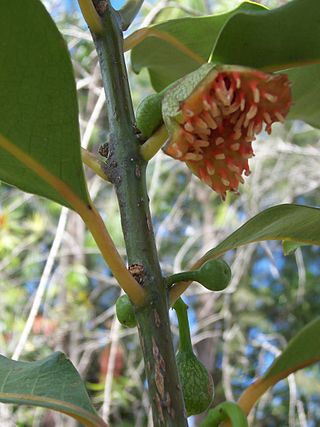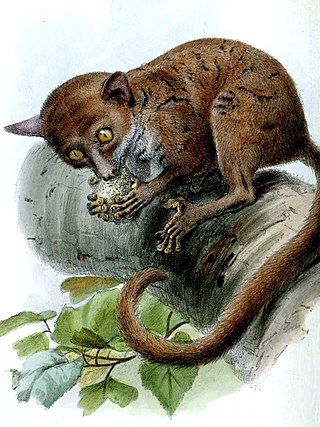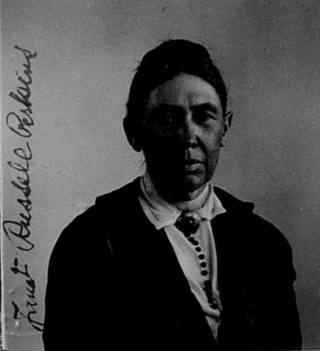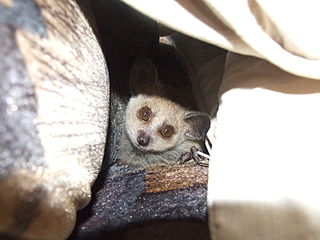
The Monimiaceae is a family of flowering plants in the magnoliid order Laurales. It is closely related to the families Hernandiaceae and Lauraceae. It consists of shrubs, small trees, and a few lianas of the tropics and subtropics, mostly in the southern hemisphere. The largest center of diversity is New Guinea, with about 75 species. Lesser centres of diversity are Madagascar, Australia, and the neotropics. Africa has one species, Xymalos monospora, as does Southern Chile. Several species are distributed through Malesia and the southwest Pacific.

Forrestdale is a suburb of Perth, Western Australia, located within the City of Armadale. It is named after John Forrest, the first premier of Western Australia.

The Colletidae are a family of bees, and are often referred to collectively as plasterer bees or polyester bees, due to the method of smoothing the walls of their nest cells with secretions applied with their mouthparts; these secretions dry into a cellophane-like lining. The five subfamilies, 54 genera, and over 2000 species are all evidently solitary, though many nest in aggregations. Two of the subfamilies, Euryglossinae and Hylaeinae, lack the external pollen-carrying apparatus that otherwise characterizes most bees, and instead carry the pollen in their crops. These groups, and most genera in this family, have liquid or semiliquid pollen masses on which the larvae develop.

Hylaeus is a large and diverse cosmopolitan genus within the bee family Colletidae. This genus is also known as the yellow-faced bees or masked bees. This genus is the only truly globally distributed colletid, occurring on all continents except Antarctica.

The hymenopteran family Platygastridae is a large group of exclusively parasitoid wasps, mostly very small (1–2 mm), black, and shining, with geniculate (elbowed) antennae that have an eight-segmented flagellum. The wings sometimes lack venation, though they may have slight fringes of setae.

Nysius is a genus of false chinch bugs in the family Lygaeidae. At least 100 described species are placed in Nysius.

Neopasiphae simplicior, a native bee, is an endangered species found near Perth, Western Australia. Body is creamy yellow and brown, 7 mm long and wings up to 5 mm long. The Swan Coastal Plain has undergone agricultural and suburban development which has reduced the range and threatens the species with extinction. It has been collected at Cannington and the Forrestdale golf course. The species has been found on Lobelia tenuior, Goodenia filiformis and Angianthus preissianus.

The western dwarf galagos are a group of three species of strepsirrhine primates, native to western and central Africa. They are classified in the genus Galagoides of the family Galagidae. The eastern dwarf galagos have been moved to their own genus, Paragalago, based on genetic evidence and differences in vocalization. The two genera are not sister taxa and thus may have evolved their small sizes via parallel evolution. They are separated by the East African Rift.
Nesodynerus is a genus of potter wasps endemic to the Hawaiian archipelago. This genus is surprisingly large for the small territory it covers. The genera Chelodynerus and Pseudopterocheilus are presently treated as synonyms of Nesodynerus.

Hydrochus is the only living genus of beetle in the family Hydrochidae, which belongs to the superfamily Hydrophiloidea, and was formerly treated as a subfamily of Hydrophilidae. Hydrochus includes about 180 species, which are found worldwide. The name "Hydrochus" has also been used for a fly genus in the family Dolichopodidae, but this is a junior subjective synonym of the genus Rhaphium.

Silvanidae, "silvan flat bark beetles", is a family of beetles in the superfamily Cucujoidea, consisting of 68 described genera and about 500 described species. The family is represented on all continents except Antarctica, and is most diverse at both the generic and species levels in the Old World tropics.

Cercopidae are the largest family of Cercopoidea, a xylem-feeding insect group, commonly called froghoppers or spittlebugs. They belong to the hemipteran suborder Auchenorrhyncha. A 2023 phylogenetic study of the family suggested the elevation of subfamily Ischnorhininae to full family status as Ischnorhinidae, leaving a monophyletic Cercopinae.

Janet Russell Perkins was an American-born botanist. Perkins authored 191 land plant species names, the tenth-highest number of such names authored by any female scientist.

The eastern dwarf galagos are a group of five species of strepsirrhine primates of the family Galagidae, native to East Africa. They were formerly classified in the genus Galagoides but have been moved to their own genus, Paragalago, based on genetic evidence, and supported by differences in vocalizations and morphology. The three western/Congolian species remain in Galagoides.

Epimetopidae is a family of semi-aquatic beetles belonging to the Hydrophiloidea. They are found in sand and gravel at the edges of streams, rivers and shallow freshwater ponds. These beetles are shorter than half a centimeter long and have a pronotum with a central projection forming a shelf above the head. On the underside of the abdomen only four sternites are visible. There are approximately 72 described species in three genera, Epimetopus which is restricted to the New World, mostly Neotropical, Eupotemus with two Afrotropical species and Eumetopus with some Oriental species. Females carry their eggcases on the underside of the abdomen. The larvae are probably carnivorous based on their mouthparts and likely live in the same habitats as the adults.
Cephalops is a genus of flies belonging to the family Pipunculidae.

Euryglossina is a genus of bees belonging to the family Colletidae.

Colletinae is a subfamily of bees belonging to the family Colletidae.

Ambleminae is a subfamily of freshwater mussel in the family Unionidae. They are found throughout much of eastern North America south to Central America, although fossils are also known from Siberia. Some species have also been introduced to East Asia. They are the most speciose radiation of the Unionidae, with more than 300 species.

















